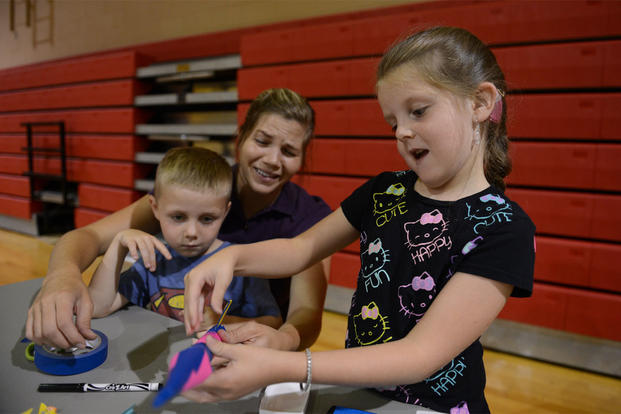Six years after it was ordered, a Defense Department process to streamline services for special needs military family members is years from completion, Defense Department officials said early this month.
The Exception Family Member Program (EFMP) is designed to make sure military families with special needs are not relocated to a base that does not have the ability to support them. Currently, each military service has its own forms and systems for supporting those families. The DoD Office of Special Needs was established by Congress in late 2009 and charged, among other things, with creating "a uniform policy for the Department of Defense regarding military families with special needs" by synchronizing the different systems. Over 128,500 military families are enrolled in EFMP, according to the DoD.
But the process for creating a unified system is likely to take "another three to five years," said Dr. Edward Tyner associate director of the DoD's special needs office. "And once we get the policies done, it's going to take some time to institutionalize those procedures. This is just that big of a project."
The sluggish standardization pace can be at least partially blamed on the hesitancy of the services to change their ways, Tyner said.
"Each service does have [its] own culture and sometimes that is a big factor," he said. "Everybody was in agreement that this is something that should happen, but I have to tell you we did go through some rough times… It was never contentious; it was just like ‘I don't know if we can do that.'"
Standardization across the services is important because many military families are stationed at a joint base or at a base run by a military service other than their own, Tyner said. For example, if an Army family were to be stationed at a Navy-led base, they would use the Navy's EFMP system. But if that family is moved from there to an Army base, they are likely to run into problems because of differences in forms and the inability to share the information from one tracking system to another, he said.
Additionally, Tyner said, because more joint basing is likely in the future, the issue could become even more acute for families with special needs as increasing numbers are forced to use an EFMP office run outside their service.
"I think what we're hearing more and more is there is a chance in the coming years that someone will be assigned to another [service's] location," he said.
Over the past six years, Tyner said, officials have made measurable progress. For example, they have whittled down the forms required across the services for a family with special needs to relocate from 11 to five, he said, a process that took bringing representatives from each service together to reexamine their requirements.
Officials have also worked to streamline screening requirements in each service, he said. For example, the Army agreed to start requiring a dental screening, like the other services, before EFMP families can be relocated overseas. And the Navy, he said, agreed to start requiring a doctor instead of a corpsman to do their medical screenings since that is the credential level required by the other services.
To update the EFMP system, officials broke the process down into four focus areas – program enrollment, duty assignment coordination, family support and the IT systems used for tracking the families. Each service has its own system for each category, and combining them means first identifying best practices and then coordinating with each different representative to come to a consensus on each and every issue, Tyner said.
Because they want the results of the streamlining to be long-term, Tyner said, they didn't want to rush the process.
"We've probably had over 800 meetings trying to hammer out some issues," he said. "When I first started this I thought, ‘Oh good, we could do this in a couple years, this will be easy.' It's been a real learning experience for me with how many road blocks you have to work around."
-- Amy Bushatz can be reached at amy.bushatz@military.com



























